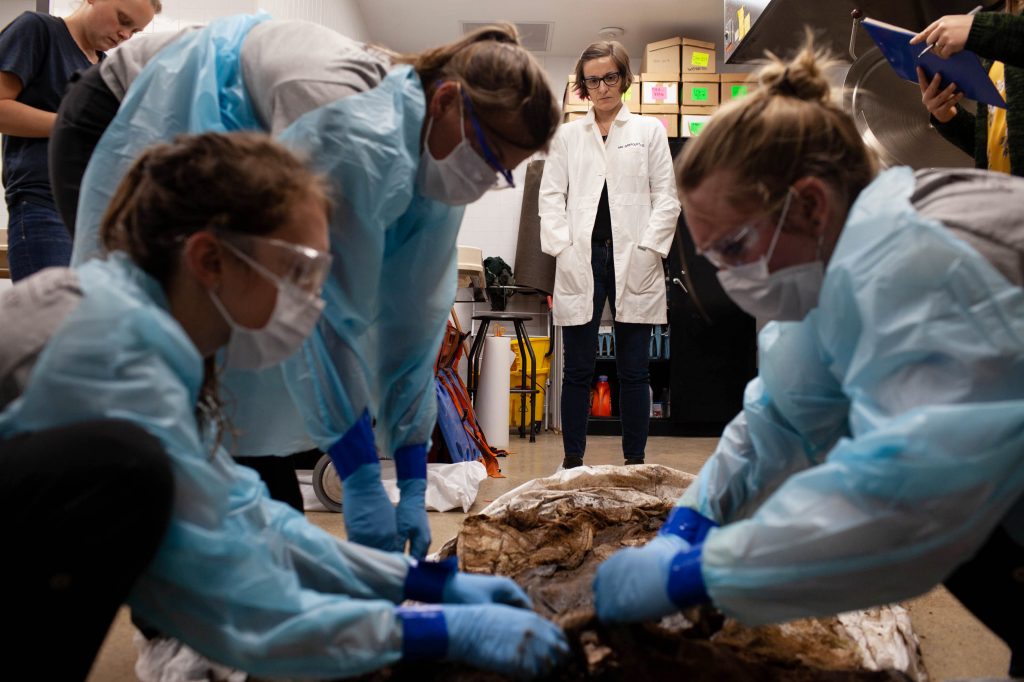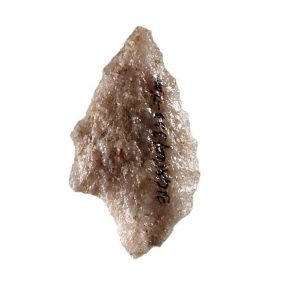Reconstructing past ways of life through burial analysis
Rituals relating to the dead are a nearly universal cultural practice with remnants appearing across the globe. To take advantage of the information these sites provide, archaeologists employ a technique known as burial analysis—the excavation and interpretation of deceased bodies and artifacts from places of burial. The preliminary steps of burial analysis involve identifying the method of burial (the condition of the deceased or the structures within the site), the number of bodies in the unit, and the presence of material goods. By taking these factors into account and tracing their change over time, archaeologists can come to informed conclusions about a culture such as perceptions of an afterlife, cultural merging or displacement, and basic social constructions (Alekshin, V.A. et al. 1983, 3-4). Taking a look at examples of burial analysis, specifically sites from Russia and the United States, helps illustrate the immense applications of the technique to piece together features of ancient cultures.
Kalmykia is a region in the Southwestern tip of Russia between the Black and Caspian seas. Grassland makes up much of the region, but it is far from empty: beneath the ground in certain locations lies a vast burial site and, within it, clues to evolving lifestyles from thousands of years ago.
In this region, researchers were able to identify two distinct groups, the Yamnaya, herders, and the Katacomb, dual herders and agriculturalists (Shishlina 2001). The former developed during the first half of the 3rd millennium BC and constructed burial mounds mostly along the coastal section of the Caspian region, but also along the highland region. Researchers believe this pattern coincides with seasonal movement, providing evidence for a mobile lifestyle. Examining buried materials suggests the Yamnaya were engaged in a system of trade with the southern Caucasus region (Shishlina 2001, 23).
The latter group emerged in the middle of the 3rd millennium BC and appear to have been more advanced than the Yamnaya in trade, social organization, and methods of burial (Figure 1).
Figure 1. Burial Site in Kalmykia
Like the Yamnaya, this new group lived a highly mobile lifestyle, even more so than their predecessors, and engaged in trade with southern regions (Shishlina 2001, 26). Conclusions made about this region rest on one of the tenets of burial analysis: distinctions in culture are reflected by treatment of the dead.
Another example of burial analysis is the Hopewell Mound Group of southern Ohio which dates back to two thousand years ago. The mounds were first documented in 1848 during a survey by Squier and Davis—American Archaeologists of the time (Figure 2).
Figure 2. Hopewell Mound Group, Etching by Squier and Davis.
In the past, the mounds were enclosed within an enormous perimeter (thousands of feet on each side) and contained the largest known mound of the Hopewell culture. The scale of the mounds and the artifacts in them are among the astounding finds in North America (NPS 2021).
When implemented and interpreted with precision, burial analysis merits its status as a valuable technique to reconstruct the past.
New content:
Legislation around burial sites: http://www.phmc.state.pa.us/portal/communities/cemetery-preservation/laws/federal-laws.html
Burial analysis of a site in Egypt:
https://www.jstor.org/stable/pdf/3821746.pdf
Reference list:
Alekshin, V. A., Brad Bartel, Alexander B. Dolitsky, Antonio Gilman, Philip L. Kohl, D. Liversage, and Claude Masset. Apr., 1983. “Burial Customs as an Archaeological Source [and Comments].” Current Anthropology , Vol. 24, (No. 2): pp. 137-149.
Shishlina, Natalia. 2001. “Early Herders of the Eurasian Steppe.” Expedition Magazine, Vol. 43, (No. 1): pp, 21-28.
Dec. 12, 2021 “Hopewell Mound Group.” National Park Service.
Figure 1: 2001. Katacomb Burial Excavations. https://www.penn.museum/sites/expedition/early-herders-of-the-eurasian-steppe/
Figure 2: Squier, Ephraim G, and Edwin H. Davis. 1848. HMG etching. https://www.google.com/search?q=hopewell+mound+group+mounds&source=lnms&tbm=isch&sa=X&ved=2ahUKEwiIiZSLrqv6AhVCkokEHZhcCSUQ_AUoAXoECAEQAw&biw=1200&bih=650&dpr=2#imgrc=X4uXLRhcVJuFYM




















